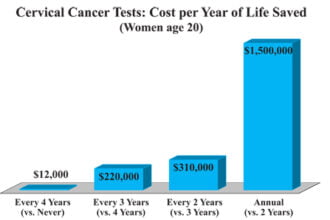One of the most device-intensive areas of medical technology — one with few effective clinical alternatives — is spine surgery. This is one medtech arena that, although not immune to pressures for cost containment, is certainly highly resistant to efforts at cost reduction, primarily because of the lack of effective alternatives.
One of the most device-intensive areas of medical technology — one with few effective clinical alternatives — is spine surgery. This is one medtech arena that, although not immune to pressures for cost containment, is certainly highly resistant to efforts at cost reduction, primarily because of the lack of effective alternatives. Below is an excerpt from the MedMarket Diligence Report #M520, “Worldwide Spine Surgery: Products, Technologies Markets and Opportunities, 2010-2020”.
Methodologies vary; reliability of statistics varies; but there is no question that low back pain and related spine treatment costs are a significant drain on country and global healthcare budgets. These tremendous costs include lost productivity and income from work, the expense of medical, rehabilitation and surgical interventions, and the costs of disabling pain and limited daily function. In the USA alone, estimated costs to those who are severely disabled from low back pain range from $30-70 billion annually. Examining 1998 statistics (which at the time were the most recent available), Luo and colleagues found total health care expenditures incurred by individuals with back pain in the USA to have reached $90.7 billion; total incremental expenditures attributable to back pain among these persons were approximately $26.3 billion. (Luo X, Pietrobon R, Sun S, Liu G, Hey L. Estimates and Patterns of Direct Health Care Expenditures Among Individuals with Back Pain in the United States. Spine. 2003; vol. 29, no. 1:79-86). On average, individuals with back pain incurred health care expenditures that were about 60% higher than individuals without back pain ($3,498 vs. $2,178). This data points to back pain as one of the most expensive diseases affecting the US population. Rates of spinal surgery in the USA have increased sharply over the last twenty years, and there is documented evidence of enormous geographic variation in the rates of spine surgery.
Indirect costs related to days lost from work are substantial (Ann Intern Med. 2007 Oct 2;147(7):478-91. Diagnosis and treatment of low back pain: a joint clinical practice guideline from the American College of Physicians and the American Pain Society. Chou R, et al.) Back pain is second only to upper respiratory conditions as the stated cause of work loss. The costs for treatment and compensation for LBP in industry may be greater than the total amount spent on all other industrial injuries combined. In a sense, the 80/20 rule seems to apply here: most of the costs, about 80%, are incurred by about 20% of the LBP patients.
According to a report from the Healthcare Cost and Utilization Project (HCUP Statistical Brief #105, February 2011), inpatient stays for back problems cost more than $9.5 billion in 2008, making it the ninth most expensive condition treated in hospitals. There were about 3.4 million emergency department visits by patients with back problems, and over 663,000 inpatient stays in hospitals for back surgery or other back disorders. The report found that adults ages 18-44 were most likely to require emergency department care for back pain and seniors 65-84 were the least likely.
Data from the European survey on working conditions (http://osha.eu.int) reveal that 30% of European workers suffer from back pain, leading the list of all reported work-related disorders. While in most cases patients make a full recovery from an episode of low back pain (according to the EU OSHA site, 60-70% recover within 6 weeks, 70-90% within 12 weeks), this still adds up to a significant amount of time lost from work. To make matters worse, the recurrence rate for low back disorders is very high. In one year the recurrence rate is estimated to be 20-44%; over a lifetime recurrences of up to 85% are reported.
Although very common across all types of industries and jobs, several studies have demonstrated that low back disorder rates are particularly prevalent in certain types of industries and working groups, including: agricultural workers; construction workers; carpenters; drivers including truck and tractor operators; nurses and nursing assistants; cleaners, orderlies and domestic assistants. It appears that the prevalence of low back disorders in the European Union is similar among men and women.
Estimates from EU Member States of the economic costs of all work-related ill health range from 2.6 to 3.8% of GNP, although precise figures do not exist. However the figures may be higher as the true societal costs are difficult to estimate. A study from the Netherlands estimated the total cost of back pain to society to be 1.7% of the gross national product in 1991 (Work-related Low Back Disorders, Op De Beeck, R. and Hermans, V., European Agency for Safety and Health at Work, 2000, ISBN 92-95007-02-6).
According to Bekkering et al., (Development of an implementation strategy for physiotherapy guidelines on low back pain. Australian Journal of Physiotherapy, 2003, Vol 49), about 85% of people with back pain take less than seven days off, yet this accounts for only half of the number of working days lost by back pain. The rest is accounted for by the 15% who are absent for over one month.
A study by Dagenais et al. (Dagenais S, Caro J, and Haldeman S, A systematic review of low back pain cost of illness studies in the United States and internationally. The Spine Journal, 2008. 8(1): p. 8-20) estimated that the total annual cost of low back pain in Europe was £12.3 billion in 1998 and that 87 per cent of these costs were indirect. A 2001 study in Australia by Walker, Muller et al. (Walker BF, Muller R, Grant WD (2003) Low Back Pain in Australian Adults: The Economic Burden, Asia Pac J Public Health 15:79-87) puts the annual cost of back pain at $9.1 billion, being $1 billion in direct costs and $8.1 billion in indirect costs. This amounts to $474 per person in the total Australian population.








